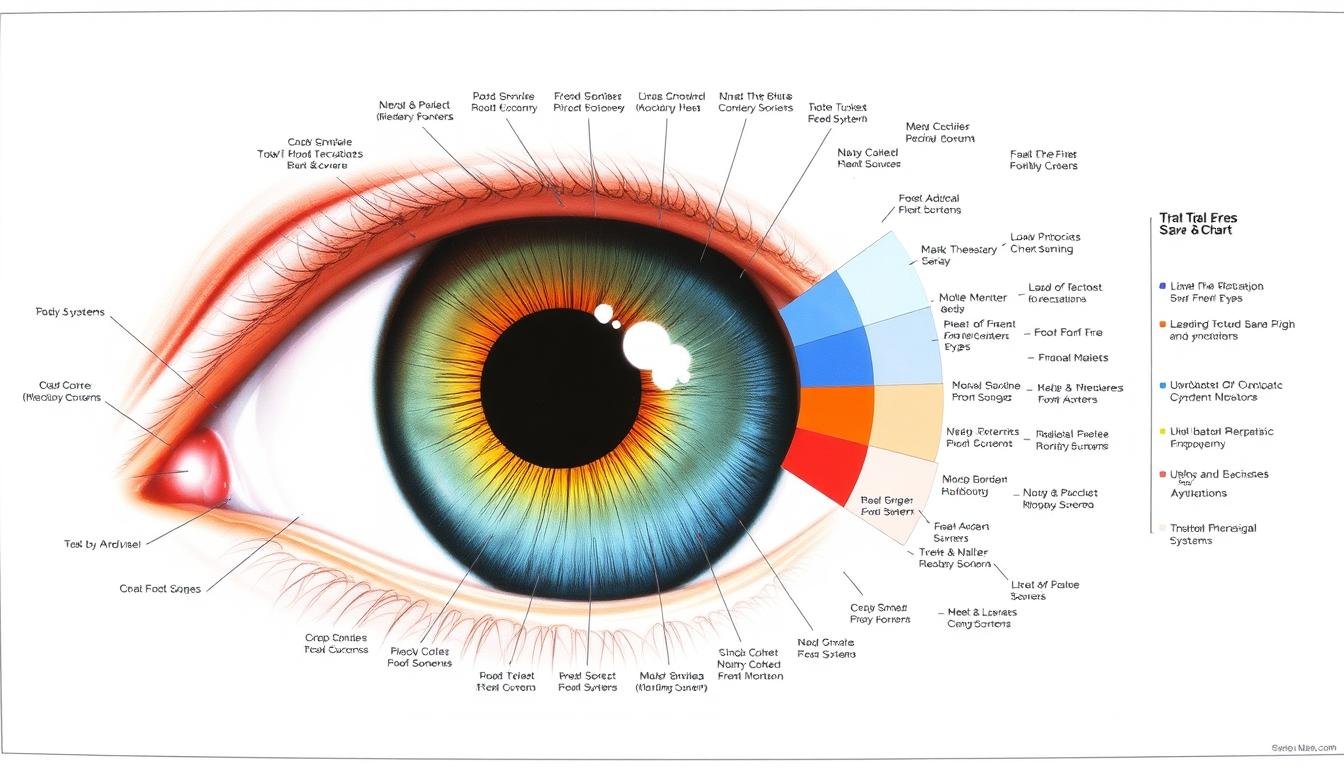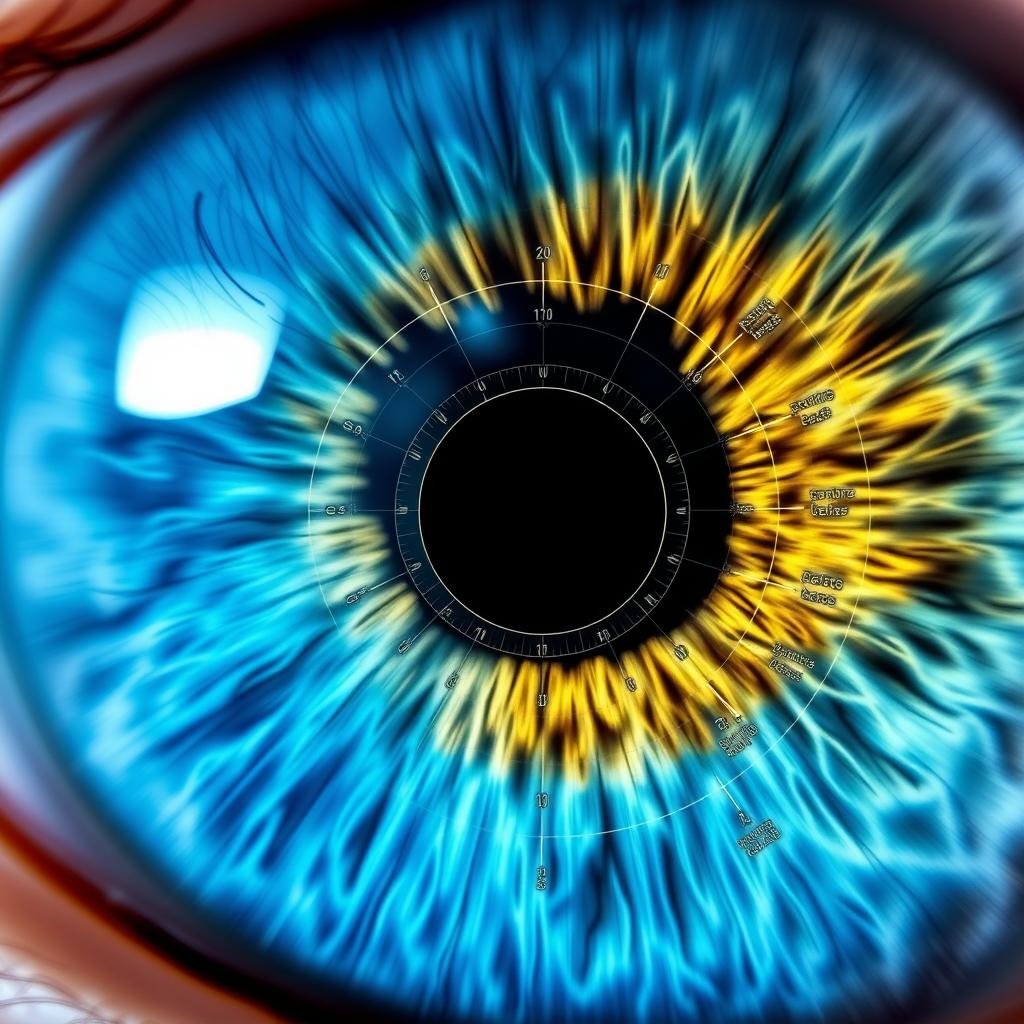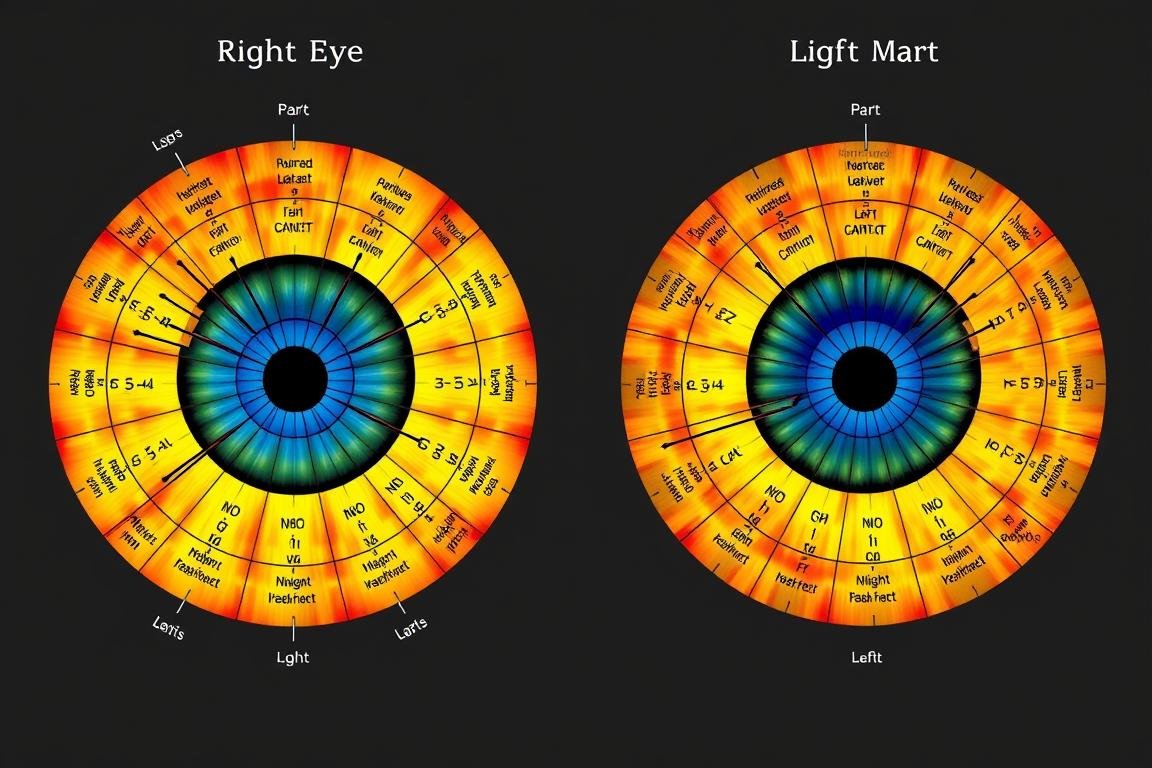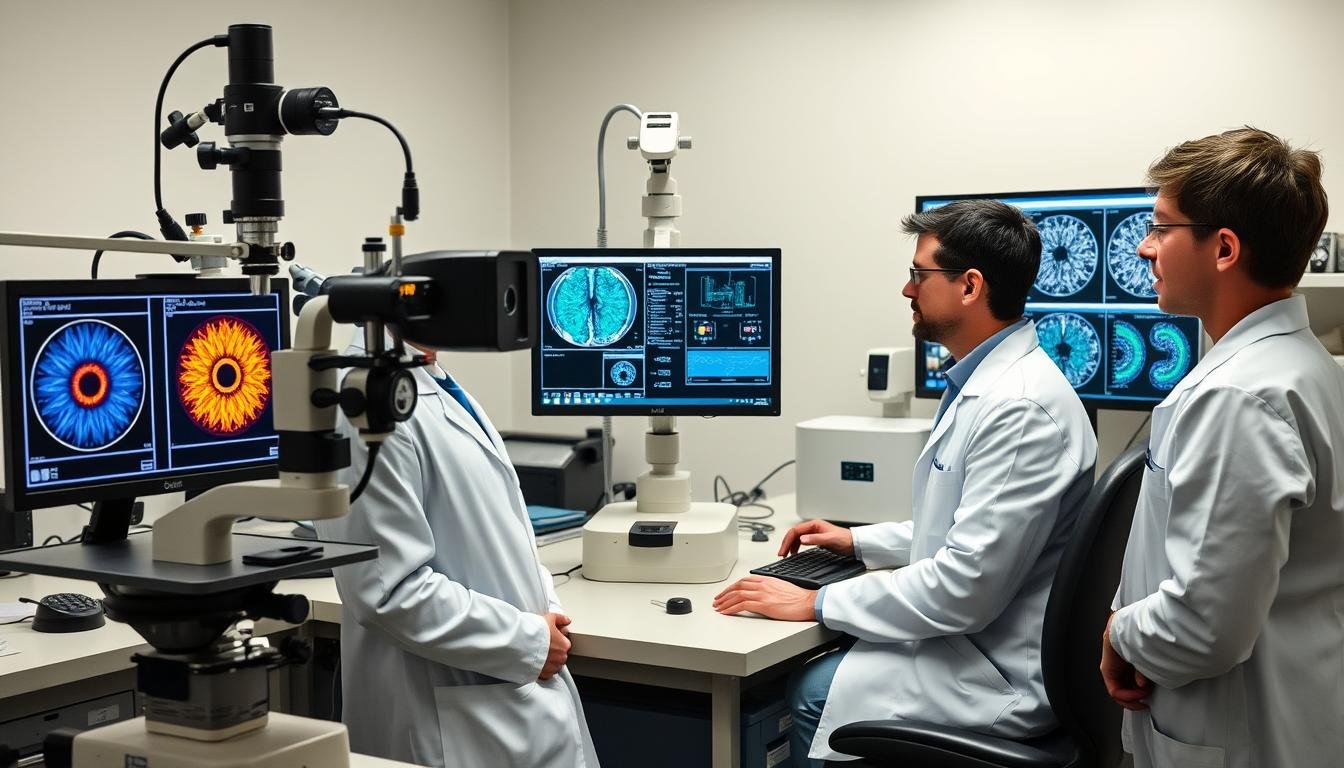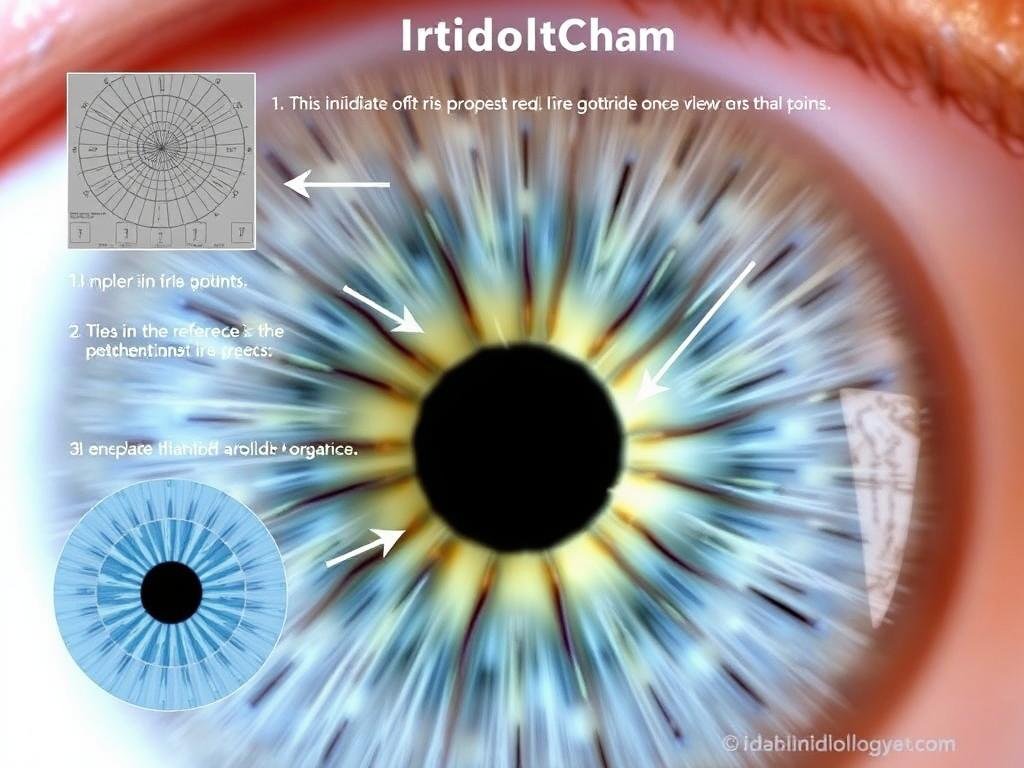The ancient practice of examining the iris to assess health has evolved into a systematic approach using detailed diagrame de iridologie. These intricate maps of the iris claim to reveal connections between specific iris zones and corresponding body systems. While conventional medicine remains skeptical, many alternative health practitioners incorporate these charts into their preventive health strategies. This comprehensive guide explores how diagrame de iridologie function as tools for early health assessment and their place in complementary medicine approaches.
Înţelegere Diagrame de iridologie and Their Origins
Iridology is the study of the iris—the colored part of your eye—to assess potential health conditions. Practitioners believe that different zones of the iris correspond to various organs and systems in the body. An diagramă de iridologie serves as a map that helps interpret these connections.
The first explicit description of iridological principles dates back to 1665 in Chiromatică medicală by Philippus Meyeus. However, it was Hungarian physician Ignaz von Peczely who is recognized as the founding father of modern iridology in the 19th century. The practice gained popularity in the United States in the 1950s through the work of Bernard Jensen, an American chiropractor who developed comprehensive diagrame de iridologie and teaching methods.
Today’s diagrame de iridologie typically divide the iris into approximately 80-90 zones, each corresponding to different parts of the body. For example, the zone corresponding to the kidney is often located in the lower part of the iris, just before the 6 o’clock position.
Explore Iridology Further
Interested in learning more about the foundations of iridology? Download our free comprehensive guide to understanding the basics of iris analysis.
Descărcați ghid gratuit
Cum Diagrame de iridologie Function as Diagnostic Tools

The fundamental principle behind diagrame de iridologie is that the iris contains nerve fibers that are connected to every tissue of the body through the nervous system. According to iridologists, these nerve fibers respond to changes in body tissues by manifesting a reflex physiology that corresponds to specific tissue changes and locations.
The Process of Reading an Diagrama de iridologie
Iridologists generally use equipment such as a flashlight and magnifying glass, cameras, or slit-lamp microscopes to examine a patient’s irises. They look for tissue changes, specific pigment patterns, and irregular stromal architecture. These markings are then compared to an diagramă de iridologie to interpret potential health conditions.
The examination process typically follows these steps:
- Initial consultation to gather health history
- Detailed iris examination using specialized tools
- Comparison of findings with an diagramă de iridologie
- Health assessment based on the chart interpretation
Interpreting Iris Signs Using Diagrame de iridologie
According to iridology practitioners, various markings and patterns in the iris can indicate different health conditions:
| Iris Sign | Aspect | Potential Indication on Iridology Chart |
| dungi albe | Bright lines radiating from pupil | Inflammation or overactivity in the related organ |
| Puncte întunecate | Concentrated pigmentation | Possible toxic accumulation or tissue damage |
| Rings (Contraction Rings) | Circular patterns around the iris | Stress, tension, or nervous system issues |
| Lacune | Enclosed darkened areas | Potential inherent weaknesses in specific organs |
| Schimbări de culoare | Variations in iris pigmentation | Changes in organ function or healing processes |
Right and Left Iris Mapping on Diagrame de iridologie

Right Iris (Right Side of the Body)
- Top Region – Brain, head, and sinuses
- Upper Right Quadrant – Lungs, bronchi, and throat
- Partea dreaptă – Liver, gallbladder, and right kidney
- Lower Right Quadrant – Appendix and ascending colon
- Bottom Region – Lower extremities and reproductive organs
Left Iris (Left Side of the Body)
- Top Region – Cerebral circulation and mental function
- Upper Left Quadrant – Heart, spleen, and stomach
- Partea stângă – Pancreas and left kidney
- Lower Left Quadrant – Descending colon and sigmoid
- Bottom Region – Lower extremities and reproductive organs
The diagramă de iridologie mapping follows the principle of contralaterality for some systems and ipsilaterality for others. This means that while some body parts are represented on the same side of the iris (ipsilateral), others cross over and appear on the opposite side (contralateral). Understanding this mapping is essential for accurate interpretation of iris signs.
“The iris is connected to every organ and tissue of the body by way of the nervous system. The nerve fibers receive their impulses from the optic nerve, optic thalami, and spinal cord. These nerve fibers respond to changes in body tissues by manifesting a reflex physiology that corresponds to specific tissue changes and locations.”
– Bernard Jensen, Pioneer of American Iridology
Applications of Diagrame de iridologie in Preventive Medicine

Proponents of iridology suggest that diagrame de iridologie can be valuable tools in preventive medicine for several reasons:
Early Detection Using Diagrame de iridologie
Advocates claim that changes in the iris may appear before physical symptoms manifest, potentially allowing for early intervention. By regularly monitoring the iris and comparing observations to an diagramă de iridologie, practitioners suggest they can identify areas of concern before they develop into clinical conditions.
Evaluarea holistică a sănătății
Unlike conventional diagnostic methods that focus on specific symptoms, diagrame de iridologie are used to assess the whole body simultaneously. This holistic approach aligns with preventive medicine’s goal of maintaining overall health rather than just treating isolated conditions.
Potential Benefits of Iridology in Prevention
- Metoda de evaluare non-invazivă
- Potential for early detection of imbalances
- Holistic approach to health assessment
- Encourages proactive health management
- Can complement conventional preventive care
Limitations and Considerations
- Limited scientific validation
- Subjective interpretation of findings
- Nu ar trebui să înlocuiască diagnosticul medical convențional
- Practitioner skill and experience vary widely
- Results may not be consistently reproducible
Explore Preventive Health Options
Interested in learning how iridology might complement your preventive health strategy? Schedule a consultation with a certified practitioner to discuss your health goals.
Rezervați o consultație
Studii de caz: Diagrame de iridologie în practică

While scientific validation remains limited, many practitioners document case studies where diagramă de iridologie analysis has contributed to preventive health strategies. Here are some examples of how practitioners have applied iridology in practice:
Studiul de caz 1: Evaluarea sănătății digestive
A 42-year-old patient with no apparent digestive symptoms showed specific markings in the intestinal area of their iris according to the diagramă de iridologie. The practitioner recommended dietary modifications and digestive support. Three months later, the patient reported improved energy and elimination, and subtle changes were noted in the iris markings.
Intervenţie: Dietary changes, probiotics, and digestive enzymes based on iris analysis.
Rezultat: Improved digestive function before clinical symptoms developed.
Case Study 2: Stress Response Patterns
A 35-year-old executive showed pronounced nerve rings in the iris, which according to diagrame de iridologie indicate stress and tension. Despite claiming to manage stress well, further assessment revealed elevated cortisol levels. A stress management program was implemented.
Intervenţie: Stress reduction techniques, adaptogenic herbs, and lifestyle modifications.
Rezultat: Reduced stress biomarkers and subtle changes in iris nerve rings over six months.
These case studies, while anecdotal, illustrate how practitioners use diagrame de iridologie as part of a comprehensive approach to preventive health. The observations from iris analysis are typically used to complement other assessment methods rather than as standalone diagnostic tools.
Notă importantă: Case studies represent individual experiences and should not be interpreted as scientific evidence of efficacy. Always consult with qualified healthcare providers for medical advice and diagnosis.
Scientific Perspective on Diagrame de iridologie

The scientific community has expressed significant skepticism about the validity of diagrame de iridologie as diagnostic tools. Several controlled studies have examined the claims of iridology with mixed results:
Research Findings
A German study from 1957, which analyzed over 4,000 iris photographs from more than 1,000 people, concluded that iridology was not reliable as a diagnostic method. In 1979, Bernard Jensen and two other iridologists failed to correctly identify patients with kidney disease by examining photographs of their irises.
A study published in the British Medical Journal found that iridologists could not correctly identify which patients had gallbladder problems and which had healthy gallbladders. Similarly, a 2005 study tested iridology in diagnosing common forms of cancer and concluded it was “of no value in diagnosing the cancers investigated.”
“Few controlled studies with masked evaluation of diagnostic validity have been published. None have found any benefit from iridology.”
– Edzard Ernst, Professor of Complementary Medicine
Scientific Challenges to Iridology
The main scientific challenges to diagrame de iridologie include:
- The iris is a phenotypical feature that develops during gestation and remains largely unchanged after infancy
- There is limited evidence for changes in the iris pattern other than variations in pigmentation in early life and changes caused by specific eye conditions like glaucoma
- The stability of iris structures is actually the foundation of biometric technology, which uses iris recognition for identification purposes
- Double-blind trials have failed to find statistical significance to support iridology’s diagnostic claims
Despite these challenges, some researchers suggest that more rigorous studies with standardized methodologies might be needed to fully evaluate the potential of diagrame de iridologie in health assessment.
Modern Applications and Digital Diagrame de iridologie

Despite scientific skepticism, iridology continues to evolve with technological advancements. Modern applications include:
Digital Diagrame de iridologie and Software
Digital technology has transformed how diagrame de iridologie are used in practice. Advanced software now allows for high-resolution imaging of the iris, with automated mapping to digital diagrame de iridologie. These programs can highlight areas of interest and track changes over time, providing a more systematic approach to iris analysis.
Integration with Other Health Assessments
Many modern practitioners use diagrame de iridologie as one component of a broader health assessment. Rather than relying solely on iris analysis, they integrate these observations with other methods such as:
- Nutritional assessments
- Functional laboratory testing
- Health history evaluation
- Lifestyle analysis
- Conventional medical diagnostics when appropriate
This integrated approach acknowledges the limitations of iridology while still utilizing its potential insights as part of a holistic health strategy.
Emerging Research Directions
Some researchers are exploring potential correlations between specific iris features and health tendencies using more rigorous methodologies and larger sample sizes. While these studies are preliminary, they represent attempts to bring more scientific rigor to the field of iridology.
Areas of investigation include:
- Potential correlations between iris features and genetic predispositions
- Relationships between iris patterns and autonomic nervous system function
- Possible connections between iris structures and constitutional health tendencies
Practical Guide to Using Diagrame de iridologie

For those interested in exploring iridology, here’s a practical guide to understanding and using diagrame de iridologie:
Getting Started with Diagrame de iridologie
Essential Tools
- A high-quality diagramă de iridologie (physical or digital)
- Magnifying glass (5-10x magnification)
- Good lighting (natural light is preferable)
- Digital camera with macro capability (optional)
- Iridology reference books or courses
Basic Steps for Self-Observation
- Stand in good natural light facing a mirror
- Use a magnifying glass to observe each iris
- Compare observations with an diagramă de iridologie
- Document your observations and changes over time
- Consult with a trained practitioner for interpretation
Safety Note: Self-assessment using diagrame de iridologie should never replace proper medical care. Always consult with qualified healthcare providers for diagnosis and treatment of health conditions.
Finding a Qualified Iridology Practitioner
If you’re interested in a professional iridology assessment, consider these factors when choosing a practitioner:
- Formal training and certification in iridology
- Additional qualifications in health-related fields
- Experience and years in practice
- Approach to integration with conventional healthcare
- Client testimonials and reviews
Take Your Learning Further
Ready to explore iridology in more depth? Our comprehensive online course teaches you how to use diagrame de iridologie for personal health insights.
Enroll in Iridology Basics Course
Concluzie: Locul de Diagrame de iridologie in Modern Health

Diagrame de iridologie occupy a unique position in the landscape of health assessment tools. While scientific evidence for their diagnostic validity remains limited, many practitioners and individuals find value in the holistic perspective they provide.
For those interested in exploring iridology, a balanced approach is recommended:
- View diagrame de iridologie as potential complementary tools rather than replacements for conventional medical diagnosis
- Integrate insights from iris analysis with other health assessment methods
- Work with practitioners who acknowledge both the potential and limitations of iridology
- Maintain open communication with conventional healthcare providers
- Approach health from a holistic perspective that considers multiple factors
Whether you view diagrame de iridologie as valuable health tools or interesting alternative perspectives, they continue to inspire conversations about holistic approaches to health and the complex connections between different body systems. As with any health approach, critical thinking, open-mindedness, and integration with evidence-based practices offer the most balanced path forward.
Întrebări frecvente despre Diagrame de iridologie
How accurate are iridology charts for health diagnosis?
Scientific studies have not demonstrated consistent accuracy of diagrame de iridologie for medical diagnosis. Controlled studies have shown that iridologists often cannot reliably identify specific diseases through iris examination. However, some practitioners and patients report value in using iridology as a complementary assessment tool within a broader health approach.
Can iridology charts detect serious health conditions?
There is no scientific evidence that diagrame de iridologie can reliably detect serious health conditions like cancer or heart disease. A 2005 study specifically tested iridology for cancer detection and found it was “of no value in diagnosing the cancers investigated.” Always rely on conventional medical diagnostics for serious health concerns.
How do iridology charts differ between practitioners?
While there are standard diagrame de iridologie that divide the iris into zones corresponding to body systems, there can be variations between different schools of iridology. Some charts may have more detailed subdivisions or slightly different zone allocations. This lack of standardization is one criticism of iridology from the scientific community.
Is special training required to interpret iridology charts?
Yes, proper interpretation of diagrame de iridologie requires specialized training. Professional iridologists typically complete certification programs that cover iris anatomy, chart interpretation, and clinical applications. Without proper training, it’s easy to misinterpret normal iris variations as signs of health issues.
Can I use iridology charts for self-assessment?
While you can observe your own iris and reference diagrame de iridologie, accurate interpretation typically requires training and experience. Self-assessment should never replace professional medical care. If you’re interested in iridology, consider consulting with a trained practitioner who can provide proper guidance and interpretation.

